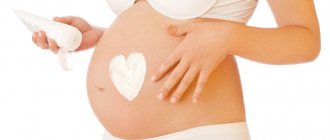Condylomatosis is a dermatological disease of viral etiology, which can manifest itself in the form of anogenital condylomatosis, genital papillomatosis, and also be complicated by malignant neoplasms, especially if they are localized on the mucous membranes. With condylomatosis, the patient’s quality of life is significantly reduced: neoplasms provoke physical and psychological discomfort, reduce the pleasure of intimacy or make it impossible.
Until now, medicine does not have the means and methods that can completely eliminate the causes of pathology. However, there are technologies that allow you to painlessly remove spiky growths from the skin and mucous membranes.
Prices for examination and treatment
What is this - general information
In medicine, anogenital condylomatosis is one of the types of dermatological pathologies that are caused by the human papillomavirus. The activity of this pathogen manifests itself in the form of the formation of small growths on the skin or mucous membranes: warts, papillomas, condylomas, polyps.
When localized on the anogenital area (skin of the anus, perineum, external genitalia), condylomas are formed - elongated, pointed growths, which, under a number of factors, form extensive clusters. Outwardly, they may resemble cauliflower, cushions of moss. In most cases, condylomas are skin-colored or have a slightly darker shade.
Since the cause of condylomatosis is a virus that is sexually transmitted, dermatovenereologists are involved in the diagnosis and treatment of the pathology. However, when specific organs are affected, doctors of other specializations are involved in diagnosis and therapy:
- for damage to the genital organs in women - a gynecologist;
- in case of damage to the genital organ in men - a urologist;
- if papillomas appear on the anus and perianal area, call a proctologist;
- for the growth of condylomas in the oral cavity - a dentist, etc.
Since the human papillomavirus has oncogenic properties, regular screening for specific cancer antigens is recommended for patients with signs of the disease.
Symptoms of the disease
During pregnancy, dangerous genital warts often appear, which are easily confused with pearlescent papules. To accurately determine the disease, it is important to pay attention to the accompanying symptoms:
- may appear in the form of pale flesh-colored warts, or grow like cauliflower bushes;
- the area of the growth varies from a few millimeters to three centimeters;
- Most often, condylomas during pregnancy appear on the genitals or around the anus;
- if the neoplasms were present before pregnancy, then after conception they grow, increase in size and become loose;
- growths that appear near the anus can cause burning, itching and the presence of a foreign body;
- flat neoplasms cause discomfort in the genital area, which causes moderate discharge.
Causes
The main reason why anogenital condylomatosis occurs is human infection with HPV. According to statistics, up to 80% of the total population of the Earth are its carriers. The main feature of the infection is considered to be a high degree of contagiousness, that is, the risk of skin tumors. When a pathogen penetrates cells, it changes their “behavior” and causes them to grow, which negatively affects the functioning of organs and systems.
The cause of anogenital condylomatosis in most cases is HPV strains 6 and 11. They primarily affect the urogenital tract and the mucous membranes of the perianal area. The main cause of infection is unprotected sexual intercourse. Factors that provoke the disease also include:
- history of STIs (chlamydia, trichomoniasis, herpes, gonorrhea, chlamydia);
- frequent change of sexual partners;
- increased level of stress;
- vitamin deficiency;
- reduced immunity;
- dysbiosis of the reproductive tract;
- hormonal imbalance.
In women, the formation of condylomas can be triggered by pregnancy.
of condylomatosis are extremely rare in children . This type of disease is typical for mature adults.
Is it possible to give birth with condylomas?
It is impossible to give a definite answer to this question, since the chance of transmitting the infection to a child varies from 4 to 80%. It is important to understand that the virus that causes condylomas does not in any way affect the development of the fetus.
The pathogen can cause premature birth, but at present there is no reliable evidence that the disease causes the development of defects in the child.
With condylomas, it is allowed to give birth naturally, but doctors recommend using a cesarean section. The fact is that during childbirth, large growths can be injured and bleeding will begin. Although at the same time condylomas and pregnancy are compatible, their presence is not the main reason for surgical delivery. There is evidence that the HPV virus is transmitted even during cesarean section, since the infection is transmitted through the membranes and the cervical canal.
Women whose genital warts are located in the anogenital area during pregnancy are allowed to have a natural birth. In this case, the threat of infection to the newborn is minimal. If the tumors are located on the vaginal mucosa or cervix, the doctor may suggest a cesarean section.
In advanced forms, condylomatosis during pregnancy leads to loss of elasticity of the vagina, which leads to the threat of rupture during childbirth.
Experts try to avoid transmitting the virus to a newborn as this can lead to unpleasant consequences. For example, laryngeal papillomatosis appears in children aged 1.5 to 5 years. The growths gradually increase in size, reducing the lumen of the larynx, which causes difficulty breathing. There is a possibility that over time the inflammatory process will spread to the mucous surfaces of the bronchi and trachea.
Pathogenesis - mechanism of development of condylomatosis disease, routes of infection
When the human papillomavirus enters the body, it penetrates into the upper and deep layers of the epidermis, the mucous membranes with which the source of infection came into contact. Main routes of infection:
- unprotected sexual intercourse;
- sharing towels with an infected person;
- use of general hygiene products and shaving machines.
Remaining in the epithelial cells, the pathogen provokes changes in its qualitative characteristics. Skin manifestations, their degree and quantity depend on the viral load, as well as on the exact localization of the virus genes inside the cell:
- episomal location (outside the cell chromosomes) causes a benign form of the disease, which does not provoke serious health consequences and is not accompanied by the formation of condylomas;
- introsomal location (invasion into human cellular chromosomes) provokes the malignant course of the disease, including the formation of malignant tumors.
The activity of the virus in the body depends on the immune response. It can be present in the human body for years without manifesting itself, it can regress, that is, go away on its own, or degenerate into malignant tumors.
Good to know: spontaneous elimination of papillomas and condylomas often occurs in women who are faced with the problem of neoplasms during pregnancy.
Also, the manifestations of the disease depend on the strain of the virus: non-oncogenic ones most often cause anogenital condylomatosis and warts on the body, while oncogenic ones are not accompanied by changes on the skin.
Pathology develops when the viral load on epithelial cells reaches its peak. The viral genome causes cells to actively divide, as a result of which a skin growth is observed in the place of its greatest “concentration”. It is noteworthy that papilloma on the hands and body can grow for several weeks or even months. Anogenital forms arise simultaneously: just yesterday the integument of the perianal region and perineum was clean, but today they are covered with clusters of large neoplasms.
Treatment of condylomas during pregnancy
First you need to acquire the necessary knowledge and learn about condylomas in general. Condyloma is a growth on the skin (or genital warts) and it can be of various types, which will already indicate the beginning of the inflammatory process. The disease itself is viral, and the causative agent is the papilloma virus, which can be transmitted by humans.
Condylomas during pregnancy can cause infection in newborn children and the development of papillomavirus and condyloma virus infections in them from early childhood, so treatment should be carried out immediately after the slightest suspicion.
And this could all be because the expectant mother did not provide proper treatment and did not take care of the future.
Complications
Many people mistakenly attribute condylomatosis to purely cosmetic defects. This pathology can become complicated and cause significant damage to a person’s well-being and physical health. Among the most common complications, experts include:
- massive growth of neoplasms, which leads to partial or complete obstruction of the urethra, genital tract, and anal dysfunction;
- inflammation of condylomas due to the accumulation of sweat, excrement, and cosmetics in the folds, as a result of which, in addition to pain and the release of unpleasant-smelling exudate, the patient may be bothered by symptoms of general intoxication;
- necrosis due to regular injury, inflammation, suppuration of overgrown tumors, which can spread to deep tissues, including subcutaneous tissue, muscles, walls of the anus and rectum, and genital tract;
- malignancy (malignancy) of benign papillomas with subsequent formation of metastases to lymph nodes and organs.
That is why it is necessary to carry out comprehensive treatment of condylomatosis, even if the neoplasms are isolated and are not accompanied by discomfort.
Treatment methods for the virus
Pregnant women who are affected by the papilloma virus, if the disease was discovered during pregnancy, should be treated in the first trimester. If exophytic condylomas have been discovered, they should immediately be removed, because if they are not removed and treatment is not started, the virus will only continue to develop, and they will still grow in size. And this is fraught, if not for the patient’s life, then for the pregnancy process and for the fetus. During the passage of the birth canal, the child may become infected, which will result in subsequent damage to the larynx by papillomatosis.
Diagnostics
To diagnose anogenital type condylomatosis, the doctor needs to visualize the neoplasms. However, this is not enough because:
- the disease can be latent without manifesting external changes;
- externally benign and malignant forms of condylomas are indistinguishable;
- external visible condylomas may be the “tip of the iceberg”, behind which lies cervical canal dysplasia or a number of STIs.
In order not to miss important points that are necessary for selecting adequate treatment methods and excluding similar pathologies (molluscum contagiosum, condylomas lata against the background of syphilis), a comprehensive diagnosis of condylomatosis is carried out. It includes:
- colposcopy and urethroscopy to identify tumors in the genital tract and urethra;
- cytology of a smear from the cervical canal to detect cervical dysplasia;
- histology of condyloma particles to determine their cellular structure;
- PCR tests to determine the type of HPV and the degree of its oncogenicity;
- immunological blood test for antibodies.
Additionally, tests are carried out for sexually transmitted infections - syphilis, HIV, gonorrhea, chlamydia and others.
Condylomatosis: treatment in modern medicine
Since the virus that causes the disease invades living human cells throughout the body, it is not possible to eliminate it. The only thing that modern medicine can offer as a treatment for this disease is the removal of tumors and the reduction of viral activity with the help of special antiviral drugs. However, even this cannot guarantee the absence of relapses.
Virologists and dermatologists recommend starting treatment for condylomatosis with a comprehensive strengthening of the immune system. Patients are recommended to give up bad habits, a nutritious balanced diet, and take additional vitamins: A, C, E, PP and group B. Moderate physical activity has a good effect on the immune system.
To reduce the risk of relapses and the formation of new condylomas, medications are prescribed:
- immunostimulants - Panavir, Immunomax, Likopid and their analogues;
- antiviral agents based on alloferon in injections.
To control the viral load on the body, regular examinations are indicated: PCR for HPV, histological analysis of smears from the cervical canal for women, analysis of smears from the urethra for men. The same treatment tactics are recommended for the patient’s sexual partners, even if they do not have signs of anal and genital warts.
To eliminate external skin defects on the genitals and perineum, modern medical technologies are used: laser therapy, electrocoagulation, cryodestruction, radiotherapy. All of them involve the removal of tumors in a specific way:
- Laser coagulation of condylomas removes growths with a focused beam of light. The technology allows you to configure the laser so that the beam affects only tissue with a certain density. At the site of the removed tumor, a scab remains, which peels off within 2-3 weeks, exposing healthy skin.
- Radio wave removal is similar to laser removal, however, when excising condylomas, the doctor does not have the ability to automatically adjust the depth of penetration of the beam. The postoperative wound is also covered with a crust, which reduces the risk of infection.
- Cryodestruction allows you to destroy condylomas using ultra-low temperatures. Immediately after the procedure, the tumors remain, but over time they die off, leaving no scars.
- Electrocoagulation acts similar to cryodestruction, but in this case, high temperatures affect the neoplasms. The tissues of the growths “curl up”, and then over the course of 1-2 weeks they gradually die and separate from the surface of the skin.
Such methods seem more convenient and safe than classical excision because:
- are carried out under local anesthesia, there is no additional stress on the body;
- This is a targeted removal of pathogenic tissues without injuring healthy ones, so there are no large open wounds and then scars left at the site of the removed tumors;
- provide more complete removal of condyloma tissue, which reduces the likelihood of reappearance of tumors or their uncontrolled growth;
- guarantee rapid healing and a short rehabilitation period.
The described methods are in most cases used for massive overgrowth of condylomas. Single small neoplasms (up to 10 mm in diameter) can be removed with cytotoxic drugs: gels Fluorouracil, Podophyllin, Imiquimod, Fluorouracil and their analogues.
Important: it is not recommended to use over-the-counter and folk remedies to remove massive growths. Self-medication can cause the growths to spread.
Prognosis and prevention
The prognosis with timely removal of condylomas and antiviral therapy is favorable. The risk of relapse is 30%. To prevent exacerbations of diseases, it is recommended to constantly use barrier contraceptives during sexual intercourse, generally strengthen the immune system, as well as regular examination (screening) to determine the degree of viral load on the body. For women to prevent cervical cancer, vaccination is recommended, which can begin at 11-12 years of age.
Prices for examination and treatment









